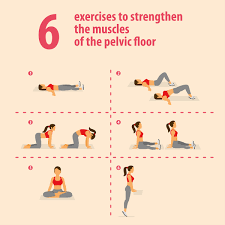A nurse in a prenatal clinic is caring for a client who asks what her estimated date of delivery will be if her last menstrual period was May 4, 2015. The nurse uses Naegele's Rule to calculate the correct EDD:
April 27, 2016
April 11, 2016
February 27, 2016
February 11, 2016
The Correct Answer is D
The correct answer is: April 11, 2016
Choice A: April 27, 2016
Reason: Using Naegele’s Rule, the estimated date of delivery (EDD) is calculated by adding one year, subtracting three months, and adding seven days to the first day of the last menstrual period (LMP). For an LMP of May 4, 2015:
- Add one year: May 4, 2016
- Subtract three months: February 4, 2016
- Add seven days: February 11, 2016
April 27, 2016, is incorrect because it does not follow the correct calculation steps.
Choice B: April 11, 2016
Reason: Following Naegele’s Rule:
- Add one year: May 4, 2016
- Subtract three months: February 4, 2016
- Add seven days: February 11, 2016
April 11, 2016, is the correct EDD as it accurately follows the calculation steps.
Choice C: February 27, 2016
Reason: This date is incorrect because it does not follow the correct calculation steps of Naegele’s Rule. The correct EDD should be in April, not February.
Choice D: February 11, 2016
Reason: This date is also incorrect. While it follows the initial steps of Naegele’s Rule, it does not account for the full calculation, which should result in an April date, not February.
Nursing Test Bank
Naxlex Comprehensive Predictor Exams
Related Questions
Correct Answer is C
Explanation
A. 1 cm below the umbilicus: This is too low for a client at 22 weeks of gestation.
B. 3 cm below the umbilicus: This is also too low for a client at 22 weeks of gestation.
C. 2 cm above the umbilicus: At 22 weeks of gestation, the fundus should be palpated about 2 cm above the umbilicus, which is at approximately the level of the maternal belly button.
D. 3 cm above the umbilicus: This is too high for a client at 22 weeks of gestation.
Correct Answer is A
Explanation
Choice A: Kegel exercises are specifically designed to strengthen the pelvic floor muscles, which play a crucial role during childbirth. Strengthening these muscles can aid in better control during labor and delivery, facilitating stretching and reducing the risk of injury.
Choice B: Kegel exercises do not have a direct impact on preventing constipation during pregnancy. However, they may help improve bowel control and prevent fecal incontinence.
Choice C: While Kegel exercises can improve posture and core strength, their primary benefit lies in strengthening the pelvic muscles, not directly reducing backaches throughout pregnancy.
Choice D: Kegel exercises are not intended to prevent stretch marks on the abdomen. Stretch marks are caused by the stretching of the skin during pregnancy and are not related to pelvic muscle exercises.

Whether you are a student looking to ace your exams or a practicing nurse seeking to enhance your expertise , our nursing education contents will empower you with the confidence and competence to make a difference in the lives of patients and become a respected leader in the healthcare field.
Visit Naxlex, invest in your future and unlock endless possibilities with our unparalleled nursing education contents today
Report Wrong Answer on the Current Question
Do you disagree with the answer? If yes, what is your expected answer? Explain.
Kindly be descriptive with the issue you are facing.
